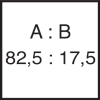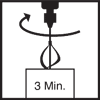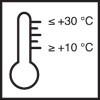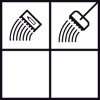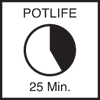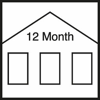Article No. 605631
Flexible floating, sealing and wearing layer in Remmers Deck OS systems
Product specifications
On delivery
Component A
Component B
Mixture
Once fully cured
Once fully cured
The stated values represent typical product characteristics and are not to be construed as binding product specifications.
Field of application
- Crack-bridging floating and sealing layer in the Remmers deck OS 8 Hybrid system
- Crack-bridging wearing layer in Remmers Deck OS systems
Properties
- Crack bridging
- Flexible
- Can be subjected to mechanical loads
-
Preparation
-
Substrate requirements
The substrate must be firm, dimensionally stable, capable of bearing loads and free of loose constituents, dust, oil, grease, rubber marks and other substances that could interfere with adhesion.
The substrate must be dry.
Suitable substrates include e.g. surfaces prepared with Remmers Epoxy Primer PF or PUR Color ZS.
The wearing layer must be applied no later than 36 hours after the intermediate layer.
If the waiting time is exceeded or unfavourable weather conditions (e.g. rain) are present, apply PUR Primer S (6062) and sand if necessary before applying the wearing layer.
The specified processing times must be followed.
-
-
Preparation
-
Combination container
Add the entire quantity of the hardener (component B) to the base compound (component A).
Mix thoroughly with a slow-speed electric mixer
(approx. 300 - 400 rpm).Pour the mixture into a separate container and mix again thoroughly.
Mix for at least 3 minutes.
Insufficient mixing is indicated by streaks forming.
-
Application
-
As a general principle, higher temperatures will reduce and lower temperatures will increase the times stated.
-
Working tools / cleaning
-
More detailed information can be found in the Remmers Tool Programme.
Clean tools and remove any contamination immediately after use and while fresh using Thinner V 103.
Take suitable protective and waste disposal measures when cleaning.
-
Storage / shelf life
-
If stored unopened in its original container in a cool, dry place and protected against frost, the product will keep for at least 12 months.
-
Usage
-
See application examples
-
-
Application examples
-
C
Pour the material onto the prepared substrate and then distribute using a suitable tool, e.g. a notched trowel or notched scraper.
approx. 1.5 kg/m²
-
FCSL
Once the material has been filled in a mixing ratio of 1 : 0.2 parts by weight, pour it onto the prepared surface, spread using a suitable toothed trowel/notched spreader, and rework with a spiked roller if necessary.
Broadcast an excess of fire-dried quartz sand (grain size 0.3 - 0.8 mm) over the base layer while it is still wet.
min. 1.8-2.0 kg/m² binder (approx. 3 mm; OS 10, OS 11a)
min. 2.5-2.6 kg/m² binder (approx. 4 mm; OS 14)
plus 20% quartz sand in each case, grain size 0.1-0.3 mm
-
-
General information
-
Unless otherwise specified, all of the values and application rates given above have been determined under laboratory conditions (20 °C). Slight deviations from these values may arise if the product is worked with on site.
Protect the coating against direct contact with water for the first 24 hours after application to prevent blistering.
The additional material needed to attain the minimum layer thicknesses (wearing layer) and cover the surface texture must be calculated.
Not suitable for recreation rooms.
Abrasive mechanical loads leave traces of wear.
Observe the application information for the Remmers Deck OS systems.
Further notes on working, system construction and maintenance of the listed products can be found in the latest Technical Data Sheets and the Remmers system recommendations.
-
-
Disposal instructions
-
Larger quantities of leftover product should be disposed of in the original containers in accordance with the applicable regulations. Completely empty, clean containers should be recycled. Do not dispose of together with household waste. Do not allow to enter the sewage system. Do not empty into drains.
-
-
Safety / regulations
-
For professional users only!
Further information concerning safety during transport, storage and handling as well as on disposal and ecology can be found in the latest Safety Data Sheet.
-


